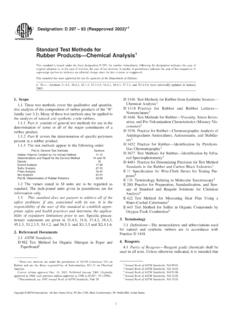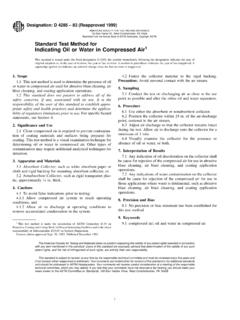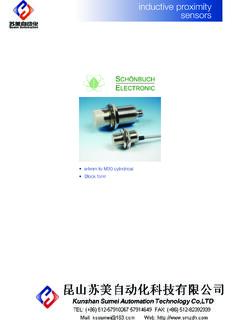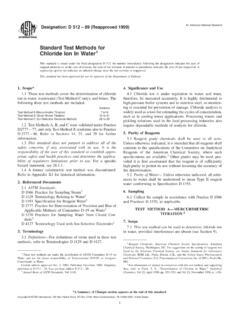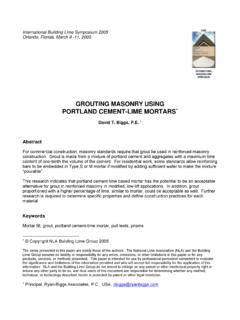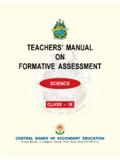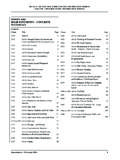Transcription of Standard Test Method for Tensile Properties of Polymer ...
1 Designation: D 3039/D 3039M 00e1 Standard Test Method forTensile Properties of Polymer matrix composite Materials1 This Standard is issued under the fixed designation D 3039/D 3039M; the number immediately following the designation indicates theyear of original adoption or, in the case of revision, the year of last revision. A number in parentheses indicates the year of lastreapproval. A superscript epsilon (e) indicates an editorial change since the last revision or Standard has been approved for use by agencies of the Department of Eq 5 was revised editorially in December This test Method determines the in-plane Tensile prop-erties of Polymer matrix composite materials reinforced byhigh-modulus fibers.
2 The composite material forms are limitedto continuous fiber or discontinuous fiber-reinforced compos-ites in which the laminate is balanced and symmetric withrespect to the test The values stated in either SI units or inch-pound unitsare to be regarded separately as Standard . Within the text, theinch-pound units are shown in brackets. The values stated ineach system are not exact equivalents; therefore, each systemmust be used independently of the other. Combining valuesfrom the two systems may result in nonconformance with Standard does not purport to address all of thesafety concerns, if any, associated with its use.
3 It is theresponsibility of the user of this Standard to establish appro-priate safety and health practices and determine the applica-bility of regulatory limitations prior to Referenced Standards:D 792 Test Methods for Density and Specific Gravity (Rela-tive Density) of Plastics by Displacement2D 883 Terminology Relating to Plastics2D 2584 Test Method for Ignition Loss of Cured ReinforcedResins3D 2734 Test Method for Void Content of Reinforced Plas-tics3D 3171 Test Methods for Constituent Content of Compos-ites Materials4D 3878 Terminology for composite Materials4D 5229/D 5229 MTest Method for Moisture AbsorptionProperties and Equilibrium Conditioning of Polymer Ma-trix composite Materials4E 4 Practices for Force Verification of Testing Machines5E 6 Terminology Relating to Methods of Mechanical Test-ing5E 83 Practice for Verification and Classification of
4 Exten-someters5E 111 Test Method for Young s Modulus, Tangent Modulus,and Chord Modulus5E 122 Practice for Choice of Sample Size to Estimate aMeasure of Quality for a Lot or Process6E 132 Test Method for Poisson s Ratio at Room Tempera-ture5E 177 Practice for Use of the Terms Precision and Bias inASTM Test Methods6E 251 Test Methods for Performance Characteristics ofMetallic Bonded Resistance Strain Gages5E 456 Terminology Relating to Quality and Statistics6E 691 Practice for Conducting an Interlaboratory Study toDetermine the Precision of a Test Method6E 1012 Practice for Verification of Specimen AlignmentUnder Tensile Loading5E 1237 Guide for Installing
5 Bonded Resistance StrainGages53. Terminology D 3878 defines terms relatingto high-modulus fibers and their composites. TerminologyD 883 defines terms relating to plastics. Terminology E 6defines terms relating to mechanical testing. TerminologyE 456 and Practice E 177 define terms relating to statistics. Inthe event of a conflict between terms, Terminology D 3878shall have precedence over the other of Terms Specific to This Standard :NOTE If the term represents a physical quantity, itsanalytical dimensions are stated immediately following theterm (or letter symbol) in fundamental dimension form, usingthe following ASTM Standard symbology for fundamental1 This test Method is under the jurisidiction of ASTM Committee D30 onComposite Materials and is the direct responsibility of Subcommittee onLamina and Laminate Test edition approved April 10, 2000.
6 Published July 2000. Originallypublished as D 3039 71T. Last previous edition D 3039 Book of ASTM Standards, Vol Book of ASTM Standards, Vol Book of ASTM Standards, Vol Book of ASTM Standards, Vol Book of ASTM Standards, Vol ASTM International, 100 Barr Harbor Drive, PO Box C700, West Conshohocken, PA 19428-2959, United , shown within square brackets: [M] for mass, [L]for length, [T] for time, [Q] for thermodynamic temperature,and [nd] for nondimensional quantities. Use of these symbolsis restricted to analytical dimensions when used with squarebrackets, as the symbols may have other definitions when usedwithout the value,n a value, existing in name only,assigned to a measurable property for the purpose of conve-nient designation.
7 Tolerances may be applied to a nominalvalue to define an acceptable range for the region,n a strain region of a stress-strainor strain-strain curve over which a significant change in theslope of the curve occurs within a small strain strain,etransition[nd],n the strain value atthe mid range of the transition region between the twoessentially linear portions of a bilinear stress-strain or strain-strain Many filamentary composite materialsshow essentially bilinear behavior during loading, such as seenin plots of either longitudinal stress versus longitudinal strainor transverse strain versus long longitudinal strain.
8 There arevarying physical reasons for the existence of a transitionregion. Common examples include: matrix cracking undertensile loading and ply minimum cross-sectional area of a percent bending for a uniaxial coupon of rectan-gular cross section aboutyaxis of the specimen (about thenarrow direction). percent bending for a uniaxial coupon of rectan-gular cross section aboutzaxis of the specimen (about the widedirection). coefficient of variation statistic of a samplepopulation for a given property (in percent). modulus of elasticity in the test ultimate Tensile strength in the test ultimate shear strength in the test coupon extensometer gage minimum required bonded tab number of coupons per sample load carried by test load carried by test coupon at maximum load carried by test coupon 1 Standard deviation statistic of a sample popu-lation for a given coupon test result for an individual coupon from thesample population for a given mean or average (estimate of mean)
9 Of a samplepopulation for a given extensional general symbol for strain, whether normal strainor shear indicated normal strain from strain transducer normal Poisson s Summary of Test A thin flat strip of material having a constant rectangularcross section is mounted in the grips of a mechanical testingmachine and monotonically loaded in tension while recordingload. The ultimate strength of the material can be determinedfrom the maximum load carried before failure. If the couponstrain is monitored with strain or displacement transducers thenthe stress-strain response of the material can be determined,from which the ultimate Tensile strain, Tensile modulus ofelasticity, Poisson s ratio, and transition strain can be Significance and This test Method is designed to produce Tensile propertydata for material specifications, research and development,quality assurance, and structural design and analysis.
10 Factorsthat influence the Tensile response and should therefore bereported include the following: material, methods of materialpreparation and lay-up, specimen stacking sequence, specimenpreparation, specimen conditioning, environment of testing,specimen alignment and gripping, speed of testing, time attemperature, void content, and volume percent , in the test direction, which may be obtained fromthis test Method include the Ultimate Tensile strength, Ultimate Tensile strain, Tensile chord modulus of elasticity, Poisson s ratio, Transition and Specimen Preparation Poor materialfabrication practices, lack of control of fiber alignment.



